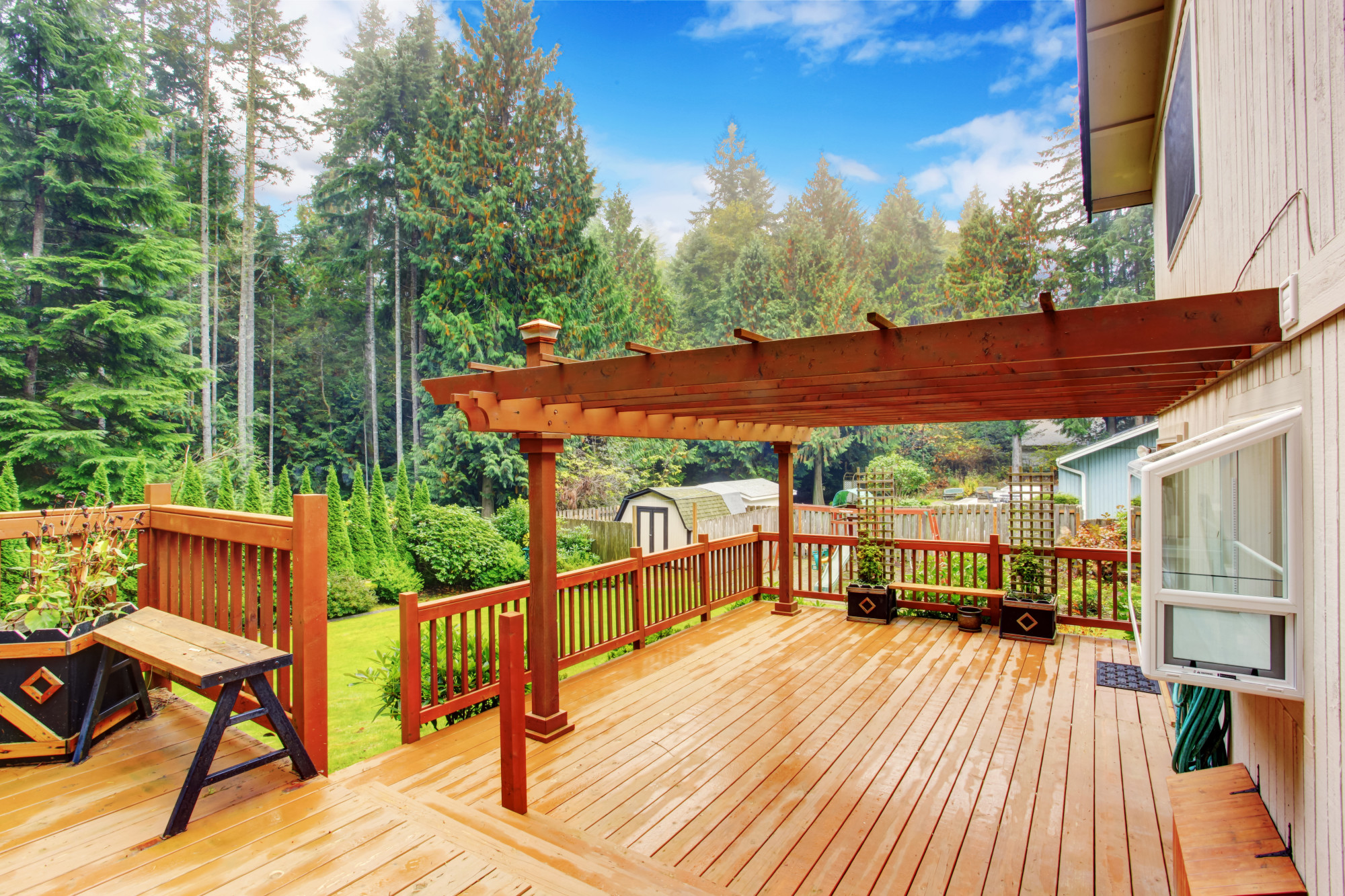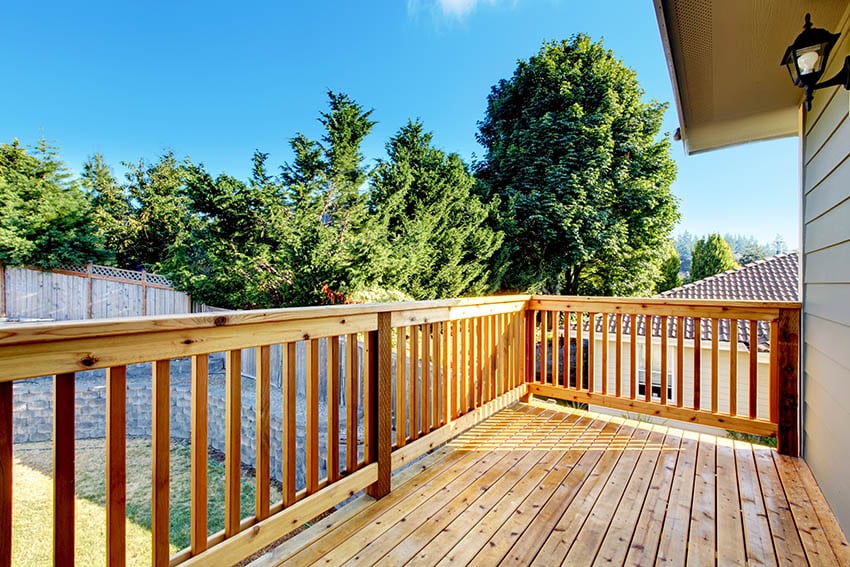
There are a number of different products on the market to seal decks, but if you have got lots of direct sun exposure in your house, you want to look for one that protects against both water and UV ray damage. If your deck is exposed to the elements and gets lots of sun or rain, consider using a waterproofing product. If your deck does not receive a lot of sunlight, but does get some snow and rain, consider using semi-transparent stains instead.
Salt and ice melting will damage some deck finishes, meaning that in the spring, you are going to have to stain again to repair any discoloration. Some materials will cause staining if left on, so a key element to protecting your deck outdoors is sweeping regularly.
Since our decks are outside, it is easy to overlook the basic cleaning that we do inside over an extended period. Basic cleaning, such as weekly sweeps to remove loose mud and debris, helps keep the natural shine on the deck. By performing this deep-cleaning process, ideally early to late in the season, you will be helping keep your decking protected in rainy weather.
We recommend a complete cleaning of the deck at least once per year, which may help to keep mildew at bay. At least once a year, clean your deck with wood deck cleaning products that are suited to your species of wood. Sealing or staining your deck is one of those maintenance items you need to do at least every 2-3 years in order to keep the lumber on your deck protected against the elements such as rain, snow, and ice.
All of the dirt, snow, water, and debris that accumulates on wood decks really deteriorates your deck if left unchecked.
Needless to say, your wooden decks will degrade really fast if not properly taken care of and maintained. If you do not give your deck a good clean during the winter, then the chances are all that mud, snow, and debris accumulated over the summer will begin to wear down the deck. While water is the primary form of damage to wood decks, rainfall also has an adverse effect on concrete decks.

It might not sound like much, but dirt, leaves, pine needles, and other debris build up on your deck over time, as well as between your deck boards. In the winter, the dirt gives snow and ice the best chance to accumulate and trap moisture, and moisture is not good for your deck; it causes rot in the wood and other structural and component damages. Wood decks are meant to blend into their surroundings, but falling leaves and soil sitting around too long may lead to discoloration, mildew, and rotting of wood.
Natural fibres can lead to water pools on top of the decking, resulting in mildew, mould, and deck damage. Unlike composites, PVC decking contains no natural fibres, which may be susceptible to mould, mildew, rot, and splitting. Deck materials such as vinyl and composites do not have to be sealed to be water resistant, but materials such as wood are naturally prone to damage from dampness.
A top layer of protection will prevent wood from getting wet through rain, snow, and ice, leaving you with a dry, stable deck in the spring. If you really want to go with a piece of deck furniture that does not stand up to this effect of the rain, opt for covering fabrics that are resistant to mildew and water.
If you already have a deck in place and you would like to keep it rain-proof, there are a couple options that you can go for.
When it comes to the most extreme security measures, if you are concerned about the hazards that rain brings on your deck, you could start with installing a slip-resistant deck.
To help withstand deck damage caused by steady rainfall, you could construct a roof, a balcony, or put some umbrellas around the deck to lessen exposure to rain. As we mentioned earlier, adding a roof, shade structure, or awnings to your deck can help curb rain or defeat sun, allowing you to enjoy the outdoors more frequently.
By starting deck maintenance in the fall, your deck will be protected against the elements, like snow, excess rainfall, and temperature fluctuations, which can otherwise lead to the wood splitting and warping over time. Wood decking is the most cost-effective option for homeowners, but if you live in a wintery climate or an area that receives a lot of rainfall, then having to constantly repair and treat wood decking can wear you down very quickly.
The last thing you want is a rotting deck and other wood problems leading to even more expensive repairs. No deck stain is effective if you do not apply it while the deck is being cleaned, and getting a deck ready to get its regular coats of waterproofing stain is a major chore without the proper tools. Appropriate preemptive measures to maintain your deck include power-washing, cleaning, staining, staining, and sealing, and checking for loose, rotting, or damaged boards. Professionally applied deck stains may last for three years on the highest-trafficked deck surfaces, and for eight years on the railings and vertical support joists.
When it is dry and mildly warm 60 to 70 degrees F apply a suitable deck clean solution using a roller or spray application method to eliminate mould and bacteria. Spray the deck with the dilute Wet & Forget solution when temperatures are above freezing, and at times that will provide 4-5 hours of drying time before rain threatens.
Choose high-quality decking materials that will prove to be practically impervious to rain, sun, and wind. Because high winds are common near beaches, beach deck owners will typically choose either a soft or a hard wind-stopping feature.






